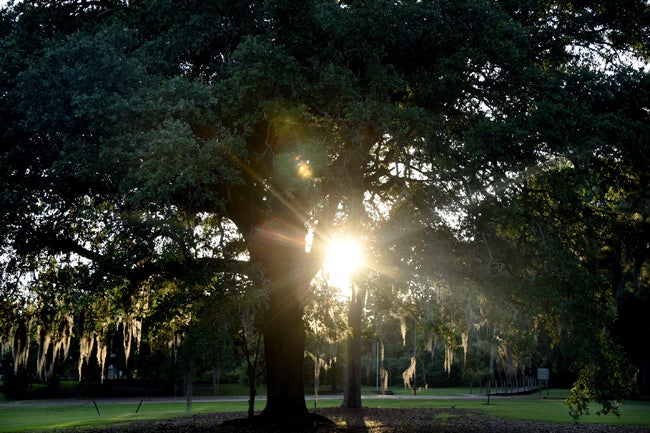For another generation: City park looking for landscape assistance
Published 12:02 am Thursday, June 23, 2016
NATCHEZ — A group of Duncan Park supporters hope to revitalize the park’s landscaping and horticulture.
In order to create — and enact — a plan for the park, the group says it will need help.
The city’s largest park, Duncan Park was donated to the City of Natchez by private landowners in 1903. It consisted largely of virgin forest. It now is home to the city’s golf, tennis and youth baseball programs, as well as Auburn Antebellum Home.
Duncan Park Golf Club Superintendent Greg Brooking said he remembers Duncan Park’s majestic trees from his time playing golf in the 1960s and 1970s. Many of those trees, he said, have died from age, disease or lightning strikes.
“In my tenure (as superintendent) I had to cut down a 250-year-old red oak that had been struck by lightning,” Brooking said. “We have a minimum of five lightning strikes that kill trees every year. So we are losing trees, and we have to reforest our park, with the same type of trees that were there in the past so that your grandchildren will be able to walk into that park and see the beauty we were fortunate to see fifty years ago.”
Brooking said he has already been planting trees and beautifying the landscaping on the golf course, but his position does not allow him to invest in the park beyond the course.
The majority of the park, Brooking said, is fast-diminishing forest of hay and weeds.
“If you ever come look at our golf course you would be astounded by the beauty,” he said. “Not to pat myself on the back, but we have taken an old ragged golf course and turned it into a beautiful setting. I don’t see why our whole park can’t look like that. I have the ability and the machinery to make it look like that all over the park.”
In order to fulfill its potential, Brooking said the park would need a long-term plan for maintenance and improvements.
“Our park here in Natchez would be a place that people would want to come,” Brooking said. “We have a central park that can be utilized like New York’s Central Park.”
Before work on a revitalized Duncan Park could even be pitched to the city, a professional designer would need to draw up a plan, Brooking said.
“If I can go to the city aldermen with a comprehensive plan to beautify the park and show it to them, our aldermen would be for the beautification of our city,” Brooking said. “They’d all be for it. But it’s not their main focus. So that’s my job, to be able to present them something.”
In order to get the city government to allocate funds for the project, Brooking said, he needs a complete plan with details on what everything would cost and how long it would take to enact.
“I’m trying to do this on a shoestring budget,” Brooking said. “There’s no budget set up for the beautification of the park.”
So far, consumer horticulture specialist Lelia Kelly of the North Mississippi Research and Extension Center has volunteered to support the project.
Brooking has also met with landscape architect Martha Hill, who came to Duncan Park to offer advice on what Brooking needed, and where he could seek more support.
“Martha can’t draw me a plan or she would be drawing a plan for everybody,” Brooking said. “They’re an asset, but they’re not what’s going to make this thing happen.”
What will make it happen, he said, is funding. He has reached out to the extension service, but said he hasn’t made progress yet.
Brooking said he might also reach out to grant writers and private organizations in the future to gain more support.
Even if planned, approved and funded, the work would probably take place over several years, Brooking said.
“If (making the plan) takes two years or three years or five years, then that’s what it takes,” he said. “I’m 60, I’m going to die not too long from now, but it would be great for our children and our grandchildren.”








